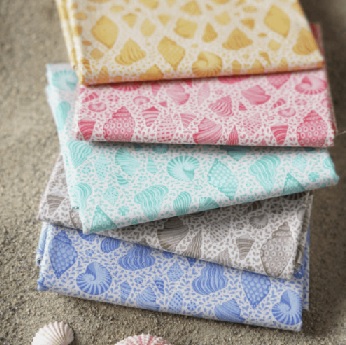Easily my most asked question, and apologies it has taken so long to do a post to address this, is “How big is a Fat Quarter?”.
At The Tartan Reel, I work in metres rather than yards so a FQ will be approximately 50 x 56cm, depending on the width of the fabric on the bolt. Most quilting cottons are around 112 to 114cm in width, or 44 inches.
What’s the difference between and Fat Quarter and a Long Quarter?
The term Fat Quarter may be new to you, so what’s the difference between a fat, long and “normal” quarter metre.
In short, if you cut a 25cm strip off the roll or bolt, this is a normal or long quarter. Think of a fat quarter as a metre of fabric cut like the top of a hot cross bun, or window panes, rather than in four strips. I’ve mocked up this diagram below, as a visual aid. No judgement, it was done in Microsoft Paint!
Why do we sell as a Fat Quarter?
The fabric we stock is generally aimed at quilters, bag makers and general stitchers. These fabrics can be used for dress making but it isn’t my main customer base.
A fat quarter represents the same area of fabric as a normal quarter, but it can prove to be far less wasteful for patchworkers and quilters.
For example, if you are cutting 6 inch squares for a project, you can get 9 from a FQ but only 7 from a normal quarter metre. You’ve received the same area, but you have two less squares and an overflowing scrap bin.
Why do you sell in quarter metre increments
One of the questions I get frequently asked is why I sell in quarter metre increments, with customers often finding it to appear expensive for a large quantity of fabric. This tends to be more from people who are dressmakers first, who rarely need skinny wee squares of fabric.
We are not here to deceive you into purchasing more, by showing it at a lower price point, it is purely so you don’t have to purchase more than you need. Sewing can be an expensive hobby and I’m not in the market to inflate the size of stashes by not selling the quantity you require. If you ask nicely, or are a regular, you know I’ll also put together Fat Eighth (25 x 56cm) bundles if that works better for you!
What happens when I purchase a quantity greater than 1?
Anything more than a single FQ will be cut as a continuous piece, and I’ve given rough measurements of what you will get, below.
2FQ = 50 x 112cm (with 112 being the width of the fabric)
3FQ = 75 x 112cm
4FQ = 1m x 112cm…. and so on
Again, this is to reduce waste and allows you to optimise your cutting layout. However, and this happens more than you’d think, if you are buying fabric for a friend and want me to cut everything as a FQ, just drop it in the order notes!
What do I need to look for when buying fabric online?
Check what the base quantity of the shop is. It is often half metres and a lot of shops wont cut smaller. Please also check whether they work in metres or yards. In the UK, metres is the norm but be aware traders are allowed a small discrepancy on cut lengths which, in my view, is unacceptable if it leaves the customer short.
Are there any exceptions?
Yes, there are! Some fabrics such as ombres or border prints require the full width of the fabric to showcase the design. These will be cut in long quarters or half metres as standard but will always be marked clearly and priced accordingly.
So, how big is a bloody FQ?
Long story short, the minimum size you will receive is 50 x 56cm. However, we always cut on the generous side and never in yardage. Please bear this in mind if you are ordering specifically for a pattern’s requirements.
Now that you know, feel free to have a browse of our lovely fabric by clicking the link below.
https://www.thetartanreel.co.uk/product-category/fabric/
Happy stitching,
Janey


